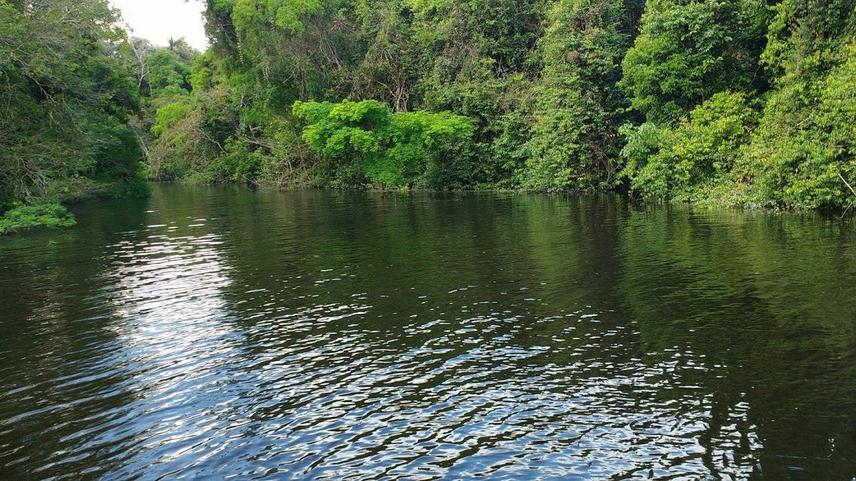Article featuring the project.
Wordpress Grupo de Pesquisa de Mamíferos Amazônicos
Effect of soil fertility on mammalian assemblage biomass and composition
23 Dec 2016 Anavilhanas National Park, Brazil, Central and Latin America Communities | Mammals
Unveiling the Main Drivers of Mammal Assemblage Structure in Amazonian Islands
The project will test the effect of soil fertility on the number of individuals and species of medium and large-sized mammals on fluvial islands composed of sediments derived from either black- (nutrient-poor) or white-water (nutrient rich) river systems. Both occur within the same Amazonian river system.

The right side of the archipelago with the Black River.
The Anavilhanas National Park is located on the Rio Negro, Central Brazilian Amazonia. It extends 128 km along the Rio Negro covering 350,018 ha. It is the second largest fluvial archipelago in the world, composed of hundreds of lakes and 400 islands covered with blackwater, seasonally-inundated riverside swamp forests (igapó).
The proposal length of this project is 6 months (3 months in the dry season and 3 months in the wet season). Only medium and large-sized non-volant mammals will be sampled in this initial survey.
Considering that the trapping success could be low on the islands, a multi-order survey conducted by different methods will be done such as linear transect by foot in the dry season and by boat in the wet season plus camera traps in both periods. Visitations to the islands by boat or on foot will be accompanied by guides to collect data from the cameras and to maintain the photographic traps.
The proposed study is the first-ever to study the influence of the soil fertility on the assemblage of mammals in the islands of Anavilhanas. There has never been a structured inventory of the mammals inhabiting the fluvial islands. The current study will provide this. This project is pioneering, gathering base-line data on never-before investigated aspects of biodiversity in Anavilhanas. Providing lists of mammals inhabiting riverine islands and an understanding of key drivers of diversity patterns will promote:
1) Conservation planning and integration of sustainable ecotourism to the islands:
2) Initiate long-term monitoring of island mammal populations.
This study will have a direct impact in the management of ICMBIO for the mammal’s fauna in this protected area. Two island clusters will be sampled, both upstream of Novo Airão as survey sites (one group is in black water (Rio Negro), one group is in white water (Rio Branco). It is expected that there will be soil fertility-related differences in mammalian abundance between the two island types (even though they are on two sides of the same large river).
Article featuring the project.
Wordpress Grupo de Pesquisa de Mamíferos Amazônicos
Effect of soil fertility on mammalian assemblage biomass and composition